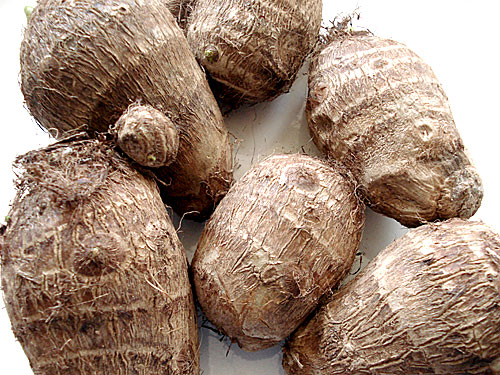
How to prepare that hairy looking beast, the taro root or satoimo.
Filed under:
basics japanese vegetables vegan
Someone alerted me to this entry on the Health.com blog which quotes me. (Health.com is a Time Inc. property.) I just wanted to set some things straight, because a couple of the statements there are just not right.
Filed under:
japanese weightloss health japan wagashi
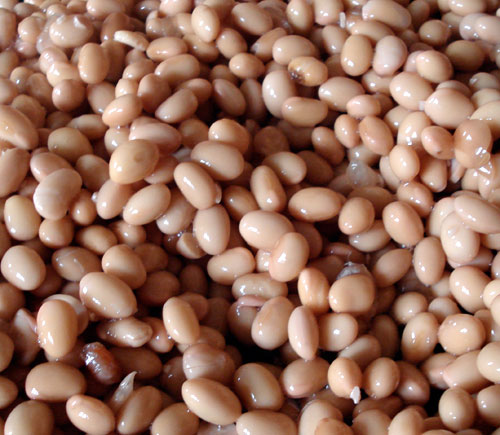
Until fairly recently I had a blind spot when it came to the humble soybean. I regularly consume soy products like soy milk, tofu and okara, not to mention fermented soybean products like natto and tempeh. And green soybeans or edamame are always a great snack.
But for some reason, I didn't really get into eating the whole dried (and cooked) soybean. It's not that they are that much harder to cook than other dried beans either.
In any case, I've rectified that situation and now I cook up a batch of soybeans quite regularly and store them in the freezer. Plain boiled soybeans are amazingly delicious, and just packed with nutrition. The cooking liquid is so rich that it can be used as a very nutritious stock or dashi for making soups and such.
There are a couple of points to watch out for when cooking whole soybeans, which are noted below in copious detail.
Filed under:
basics japanese ingredients legumes vegan
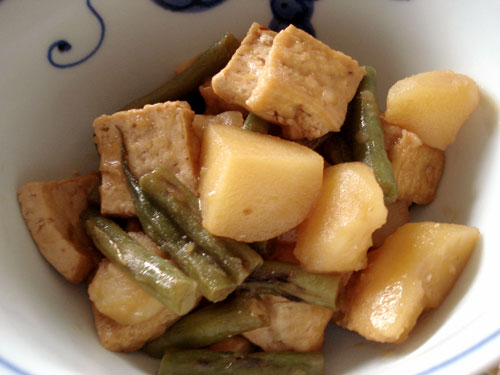
_Nikujaga_, stewed potatoes with meat, is a staple of Japanese home cooking. It's filling and comforting, and appears quite frequently for dinner at our house. Recently though I've been making this vegan version more frequently, which is just as tasty as the meaty version. Thick fried tofu (atsuage) is the protein replacement, but it's not just there for it's nutritional benefits - I love the texture in a lot of dishes.
The recipe, plus some ideas on how to reform Japanese non-vegan recipes to make them vegan, after the jump.
Filed under:
japanese potatoes vegetarian favorites vegan

Continuing my _yohshoku_ mini-marathon, here's the infamous Japan-ized pasta dish called Napolitan or Naporitan. (Japanese doesn't have an L or R sound, which is why Japanese people often mix them up when speaking Western languages.) As far as I know, there's nothing remotely Neapolitan about Napolitan, except for the use of spaghetti. It is made with a creamy ketchup-based sauce, and has the salty-sweet flavors that Japanese people love.
Filed under:
japanese yohshoku pasta

While I make Japanese style hamburgers all the time, I rarely make menchikatsu, its breaded and deep-fried cousin. I guess it's the breading and deep frying that deters me - it's a messy process, and I'm not sure it's worth the effort. So I made these ones for the blog! Fortunately they were consumed very eagerly.
Filed under:
japanese yohshoku meat
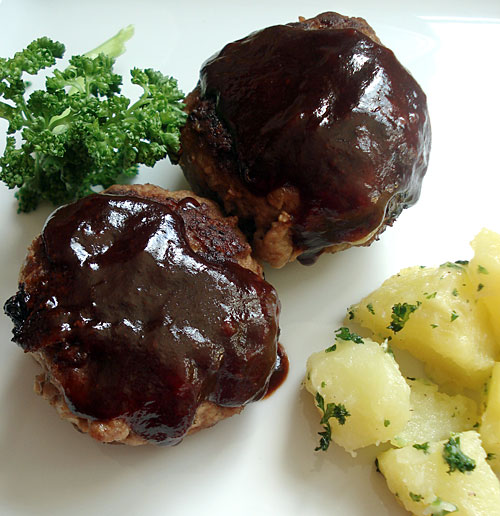
As promised, here is my recipe for making Japanese style hamburgers or hamburger steaks, one of the quintessential _yohshoku_ or Japanese Western-style dishes.
They are called hanbaagu (though they are sometimes called hambaagaa, but that variation usually refers to the kind that comes sandwiched inside a bun) in Japan, and are very popular for lunch or dinner, and are eaten as a side dish to rice (okazu) in Japanese homes. In fancier restaurants that specialize in yohshoku, they might be eaten with a knife and fork, but at home they're eaten with chopsticks. Whenever Japanese food magazines have a poll about popular okazu, hamburgers are always in the top three, especially amongst kids.
They don't have much in common with the American style of hamburger, except for the fact that they both start off with ground meat. A Japanese hamburger has more in common with meatloaf, and a rather similar texture. They are similar to the old TV dinner standby, Salisbury steak, but I think a lot better.
Filed under:
japanese yohshoku favorites meat
The New York Times has an article today about yohshoku_, Japanese-style western food. Long time readers of Just Hungry will know that I've been slowly introducing you all to yohshoku for some years now.
Filed under:
japanese yohshoku
More and more these days I'm getting requests for vegan and vegetarian recipes. While I'm not a vegetarian as I've stated here before, I like to eat a daily menu that's light on meat, and am always interested in vegan and vegetarian protein options.
There are several what I'd call factory-manufactured vegan protein products out there, from TVP to quorn. I'm sure they are safe and wholesome to eat, but I'm more interested in traditional, or time-tested, vegan/vegetarian protein alternatives.
This is the list I've come up with so far. They are Japanese-centric, since that's what I'm most familiar with. Do you have any others to add?
Filed under:
japanese ingredients vegetarian vegan
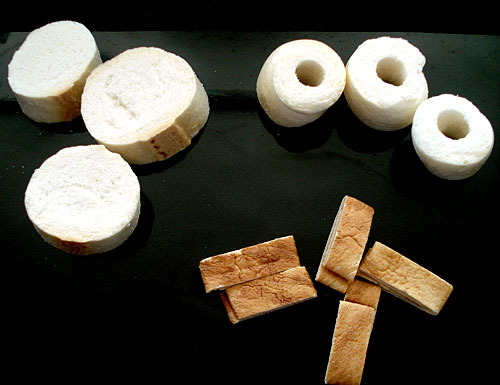
Vegetarians are probably familiar with seitan as a meat substitute. Seitan is wheat gluten that has been kneaded in such a way that the gluten threads align themselves to resemble meat. It was invented by advocates of the macrobiotic food movement in Japan, specifically as a meat substitute, in the 1960s. (Fairly accurate (from what I've read elsewhere) Wikipedia entry.)
But way before there was a macrobiotic movement, let alone seitan, people in Japan were already eating a wheat protein product called fu (麩). Like seitan, fu is made from the gluten that is extracted from wheat flour. Sometimes the gluten is mixed with other ingredients. There are two kinds of fu: raw (namafu 生麩), which is basically fresh fu; and grilled and dried (yakifu or yakibu 焼き麩). Here I'd like to focus on the dried kind which is much easier to get a hold of for people outside of Japan. It's also a great pantry item, since it keeps for a long time.
Filed under:
japanese ingredients vegetarian vegan
Pages